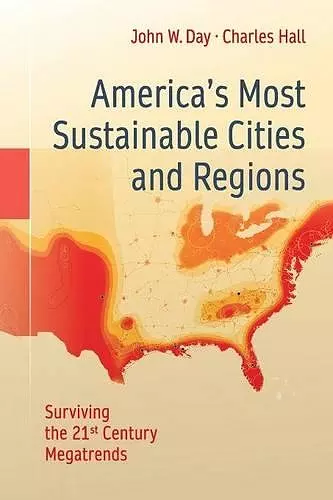America’s Most Sustainable Cities and Regions
Surviving the 21st Century Megatrends
Charles Hall author John W Day author
Format:Paperback
Publisher:Springer-Verlag New York Inc.
Published:24th Jan '16
Should be back in stock very soon

This book takes you on a unique journey through American history, taking time to consider the forces that shaped the development of various cities and regions, and arrives at an unexpected conclusion regarding sustainability. From the American Dream to globalization to the digital and information revolutions, we assume that humans have taken control of our collective destinies in spite of potholes in the road such as the Great Recession of 2007-2009. However, these attitudes were formed during a unique 100-year period of human history in which a large but finite supply of fossil fuels was tapped to feed our economic and innovation engine. Today, at the peak of the Oil Age, the horizon looks different. Cities such as Los Angeles, Phoenix and Las Vegas are situated where water and other vital ecological services are scarce, and the enormous flows of resources and energy that were needed to create the megalopolises of the 20th century will prove unsustainable. Climate change is a reality,and regional impacts will become increasingly severe. Economies such as Las Vegas, which are dependent on discretionary income and buffeted by climate change, are already suffering the fate of the proverbial canary in the coal mine.
Finite resources will mean profound changes for society in general and the energy-intensive lifestyles of the US and Canada in particular. But not all regions are equally vulnerable to these 21st-century megatrends. Are you ready to look beyond “America’s Most Livable Cities” to the critical factors that will determine the sustainability of your municipality and region? Find out where your city or region ranks according to the forces that will impact our lives in the next years and decades.
·resource availability and ecological services shaped the modern landscape
·emerging megatrends will make cities and regions more or less livable in the new century
·your city or region ranks on a “sustainability” map of the United States
·urban metabolism puts large cities at particular risk
·sustainability factors will favor economic solutions at a local, rather than global, level
·these principles apply to industrial economies and countries globally.This book should be cited as follows:
J. Day, C. Hall, E. Roy, M. Moersbaecher, C. D'Elia, D. Pimentel, and A. Yanez. 2016. America's most sustainable cities and regions: Surviving the 21st century megatrends. Springer, New York....
“The book, written for non-scientists, is wide-ranging and cross-disciplinary, recounting the historical, biophysical, economic, and social underpinnings of certain large-scale, rapidly emerging shifts ... . the authors have taken pains to provide plenty of references, maps, data, and explanation, so readers might better understand the lay of the proverbial land. Hall and Day, above all, seem earnest–earnest in their desire to help us all consider how we might better plan to live in this uncharted twenty-first century world.” (Nalini Raghavan, Country Roads, countryroadsmagazine.com, September, 2016)
“The authors do provide a systematic way of looking at sustainability, which can be applied to cities across the USA and around the world. … John W. Day and Charles Hall have provided a great overview of the factors that can make a city and a region sustainable … . this book may also serve as a road map to a reasonably prosperous future.” (Bart Hawkins Kreps, resilience.org, February, 2016)
ISBN: 9781493932429
Dimensions: unknown
Weight: unknown
348 pages
1st ed. 2016